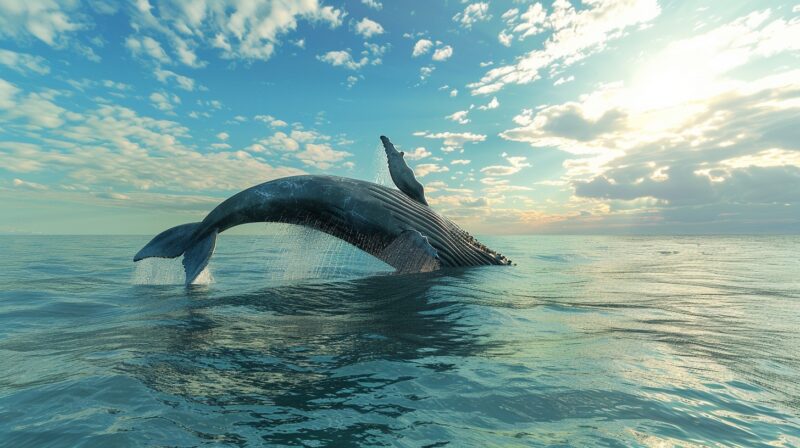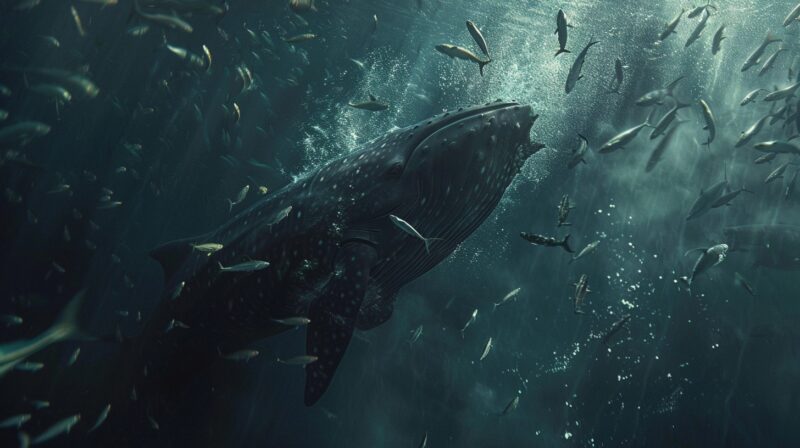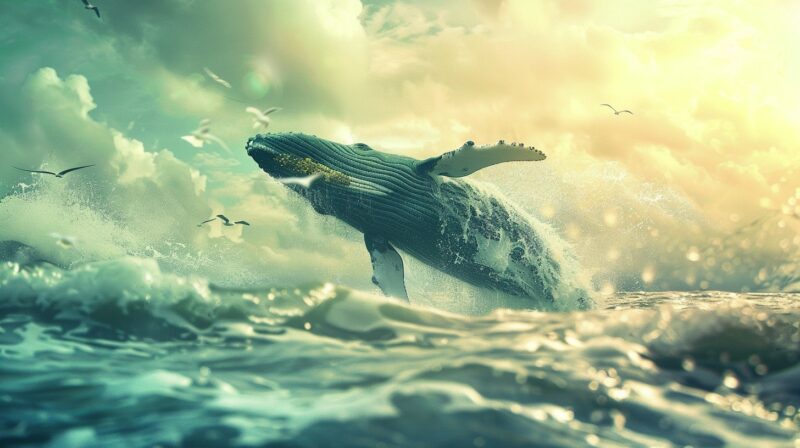Whales fascinate many with their immense size and mysterious lives beneath the ocean’s surface. However, a common misconception is categorizing these majestic creatures as fish. In truth, whales are mammals, a fact supported by several distinctive characteristics that set them apart from their aquatic neighbors.
In this blog post, we’ll explore the 5 primary reasons why they belong to the mammalian family, offering insights that highlight the unique nature of these marine giants.
Key Takeaways
- Whales breathe air using lungs, unlike fish that use gills, necessitating regular surfacing for oxygen.
- They are warm-blooded, maintaining a constant body temperature independent of the surrounding water, enabling them to inhabit diverse marine environments.
- The presence of hair at some stage of development, a characteristic feature of mammals, is observed in whales.
- Whales give birth to live young, unlike the egg-laying reproductive method typical of fish.
- They produce milk to nourish their calves, a definitive characteristic of mammals.
1. Breathing Air

Unlike fish that breathe underwater through gills, whales breathe air using lungs, a fundamental trait of mammals. This adaptation is crucial for their survival. Whales surface regularly to inhale oxygen and exhale carbon dioxide through their blowholes, a specialized adaptation not found in fish.
This behavior is not just for breathing but also plays a role in communication and navigation within their environment. The need for atmospheric oxygen compels whales to maintain a close relationship with the ocean’s surface, despite their ability to dive to great depths.
Some species, like the sperm whale, can dive over 2,000 meters deep, holding their breath for up to 90 minutes before returning to the surface to breathe.
2. Warm-blooded Nature
Whales are warm-blooded, meaning they maintain a constant body temperature regardless of the surrounding water temperature. This trait is characteristic of mammals and crucial for their survival in varied marine environments.
The ability to be warm-blooded allows whales to inhabit a variety of marine environments, from the warm equatorial regions to the icy waters of the polar seas. This adaptability is key to their global distribution.
Whales have a thick layer of blubber that insulates their bodies and helps in energy conservation, allowing them to thrive in cold waters where other species might not survive.
3. Hair Presence
Although it might seem surprising, whales have hair, at least at some point during their development. This feature is a clear indicator of their mammalian status. While adult whales may not appear hairy, they have hair follicles, and some species are born with a sparse coating of hair, particularly around the mouth area.
These hair follicles are remnants of their evolutionary past. The presence of hair, even in such a minimal form, reinforces their classification as mammals. For some species, these hairs play a role in sensory perception, helping them navigate their aquatic environment.
4. Live Births
Whales give birth to live young, a characteristic feature of mammals. This process starkly contrasts with the reproductive methods of fish, which typically lay eggs. Whale calves are born tail-first to prevent drowning and are immediately able to swim.
From the moment of birth, calves are nurtured and protected by their mothers, often with the support of other members of their pod. This social aspect of whale reproduction and child-rearing is another attribute that aligns them with mammals.
The strong bonds formed within whale pods emphasize the importance of social connections in their survival and development.
5. Milk Production

One of the most definitive characteristics of mammals is the ability to produce milk to feed their young, and whales are no exception. This aspect is vital for the growth and development of whale calves. Whale mothers lactate, providing their calves with a rich, fatty milk that is essential for growth and development in the early stages of life.
This milk is specially adapted to be highly nutritious and digestible in an aquatic environment. This nurturing behavior is a hallmark of mammalian species and distinguishes whales distinctly from fish. The care and protection offered by whale mothers to their calves are exemplary of mammalian parenting instincts.
FAQs
How do whales communicate underwater?
Whales communicate using a variety of sounds, including clicks, whistles, and low-frequency pulses. These sounds can travel long distances underwater, facilitating communication over vast areas.
Can whales sleep without drowning?
Yes, they can sleep without drowning by resting one hemisphere of their brain at a time. This allows them to maintain enough consciousness to surface for air and to keep an eye out for predators and other threats.
How long can the largest whale species hold their breath?
The sperm whale, one of the largest whale species, can hold its breath for up to 90 minutes during deep dives in search of food.
What is the main diet of whales?
Their diet varies by species. Some, like the blue whale, consume krill and small fish by filtering them through baleen plates. Others, such as orcas (killer whales), eat a variety of prey including fish, seals, and even other species.
How do whales contribute to the marine ecosystem?
They play a critical role in the marine ecosystem by helping regulate the food chain and contributing to nutrient cycling. Their feeding behavior helps transport nutrients from deeper waters to the surface, supporting plankton growth, which is foundational to marine food webs.
Are whales threatened by climate change?
Yes, they are affected by climate change through alterations in sea temperatures, ice cover, and prey availability. These changes can impact migration patterns, reproductive success, and the distribution of prey, posing challenges to their survival.
Summary
Whales may share the ocean with fish, but their biology and behavior set them apart as fascinating members of the mammal kingdom. From breathing air and being warm-blooded to giving birth to live young and nursing them with milk, the characteristics of whales clearly define them as mammals.
Related Posts:
- How to Make a Compost Heap: 10 Top Tips - Waste Not,…
- How Do Dolphins Breastfeed Underwater? Ocean Wonders
- 11 Largest Whales of North America: Unveiling the…
- How Do Whales Breastfeed Underwater? - Marine Mammal…
- What Are the Predators of Eagles? -Surprising…
- What Sounds Do Raccoons Make? - Meaning and How to…








